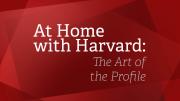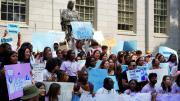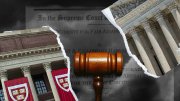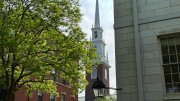Profiles are one of Harvard Magazine’s most often written genres—and certainly one of our most popular. In nearly every issue, we publish longform profiles of Harvard faculty and alumni, covering how they became who they are, their interests, what makes them tick, and what keeps them up at night. It takes a lot of work to get to know a person that well—doubly so when the profile subject is a Harvard professor, whose work we have to read closely and understand well enough to explain it to readers. The selection below reflects just a small selection of our profile work—we know you’ll enjoy them as much as we loved writing them.
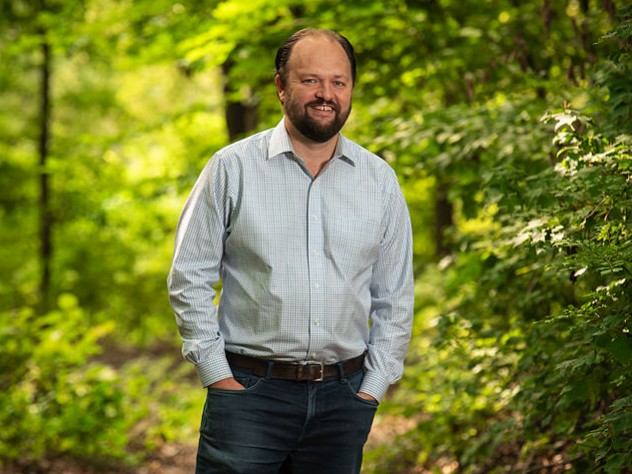
Ross Douthat sees American society stagnating amid tired culture wars and a gridlocked political system.
Photograph by Stu Rosner
Since March, when Harvard Magazine went to remote work, I’ve done exactly one interview in person. This past July, New York Times columnist Ross Douthat allowed me to come to his home in New Haven, Connecticut, to spend most of a (socially distanced) day with him, for my recent feature “The Conservative.” The interview was nothing dramatic—a walk in the wooded park nearby, a long conversation on his back deck—but it was a strong reminder of the richness of talking with a person face-to-face, something phone calls and video chats can’t fully replicate (which I wrote about here). Douthat can be a bit of a confounding figure: a devoutly Catholic social conservative whose views and attitudes are sometimes contrary to what one might expect (or else, at other times, simply contrarian), and whose personal warmth and comfort with uncertainty and disagreement can feel rare these days on op-ed pages. It was important and tremendously helpful to sit down with him in person—that encounter gave structure and force to the rest of the profile.
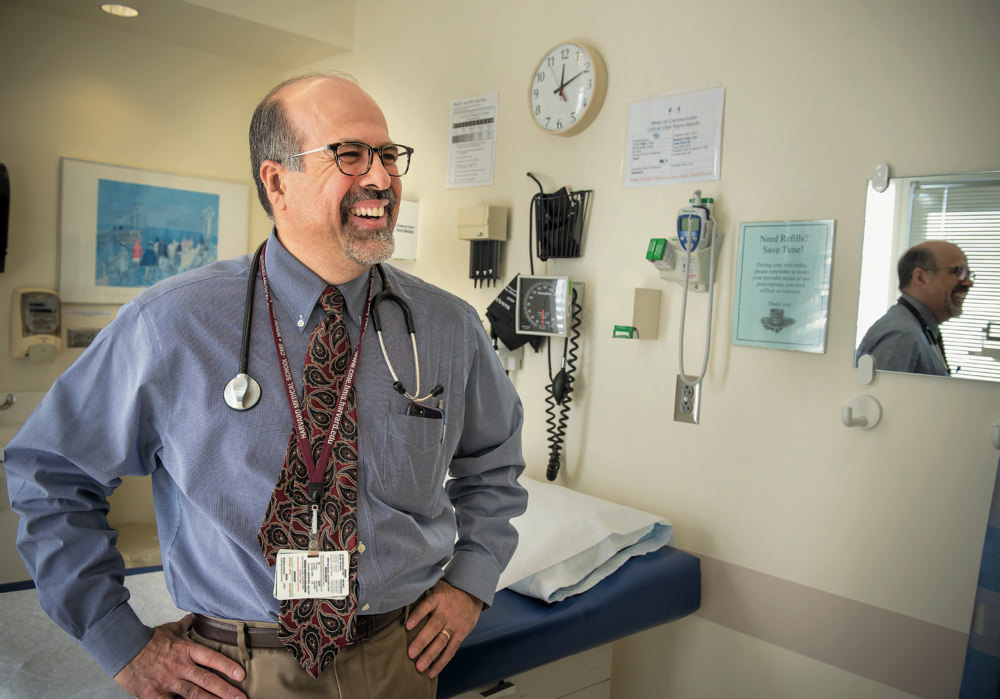
Rafael Campo
Photograph by Stu Rosner
I was a reader and admirer of Rafael Campo’s poetry for a long time before I embarked on a profile of him a couple of years ago—his poem “What the Body Told” is one I’ve memorized almost by accident. So, by the time I sat down with him in person, for my profile “The Physician-Poet,” I had a fairly strong sense of who he was as a physician and a writer. And yet, those conversations taught me so much more about his life and thought. Listening to him describe the patient-doctor encounter in the exam room—a seemingly straightforward experience that’s actually enormously complex—was profoundly moving. And it also became unexpectedly personal for me: the deeper I went into my reporting on Campo, the more I was reminded of the connection two years earlier between my dying father and a medical resident in the hospital where he was treated. That medical resident, it turned out, had been a student of Campo’s at Harvard Medical School. And so, I wrote about that experience as well, and about seeing, in a sense, Campo’s philosophy of compassionate care unfold through the work of one of his former students.
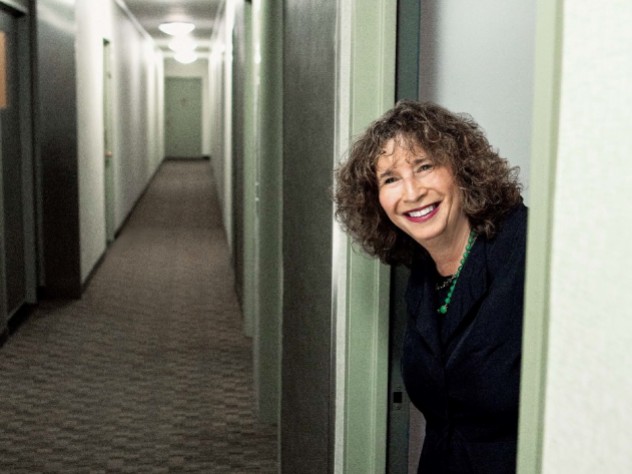
Nancy Rosenblum in her Greenwich Village apartment building
Portrait by Robert Adam Mayer
“Neighbors hold our lives in their hands.” I still think often about this line from Nancy Rosenblum’s book Good Neighbors, which was the basis for “The Democracy of Everyday Life.” It is so obviously true, and yet feels often overlooked among the forces that shape—in stark or intimate ways—our daily existence and our experience of home: the place, Rosenblum says, from which there is “no exit.” A political philosopher, she conceived of the relationships between neighbors as a form of “everyday democracy” in America. I’ve reflected on all these ideas during the past many months of the pandemic, while stuck in my apartment, in prolonged proximity to neighbors who are also working from home all day and cooking at home most nights. Much more than ever before, the tenants in my building know each other’s rhythms and patterns. We make room for each other, help each other out in subtle and occasionally more overt ways. My neighbors’ carefulness about the virus is also mine. This is partly what Rosenblum was talking about. We hold each other’s lives in our hands.
~Lydialyle Gibson, Associate Editor
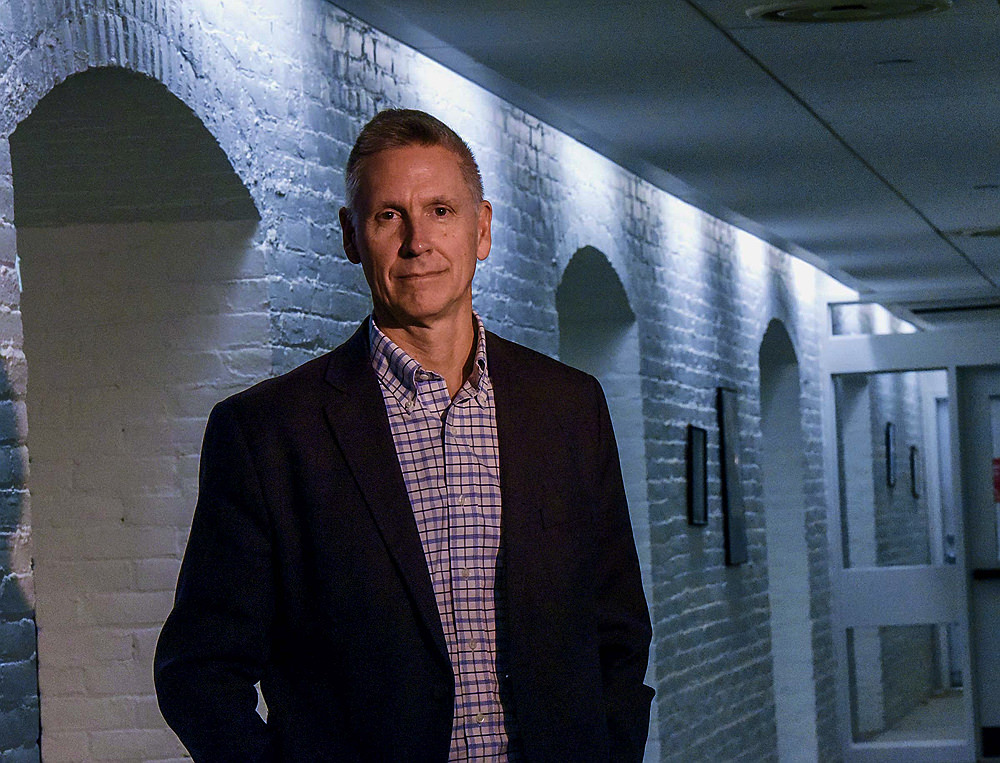
Philip J. Deloria
Photograph by Jim Harrison
I share “Native Modern,” a profile of historian and Native American studies scholar Phil Deloria, every chance I get. It remains one of my favorite assignments ever. I first encountered Deloria by chance at a talk he gave in early 2018, and he left an overwhelming impression on me. I’d later learn that he is one of the most highly regarded Native American studies scholars anywhere. Like many Americans, I thought I knew the broad strokes of American Indian history—the betrayal and genocide with which indigenous people were forced from their land—but Deloria’s work opened up an entirely new world of ideas to me and changed the way I view this country. I was afraid that I wouldn’t be able to capture what makes him so interesting on the page, but fortunately, sometimes profile subjects are just as much a pleasure to write about as they are to get to know. Be sure also to check out his 2019 New Yorker story “The Invention of Thanksgiving," a wonderful and essential interpretation of the history behind this week’s holiday.
~Marina Bolotnikova, Associate Editor
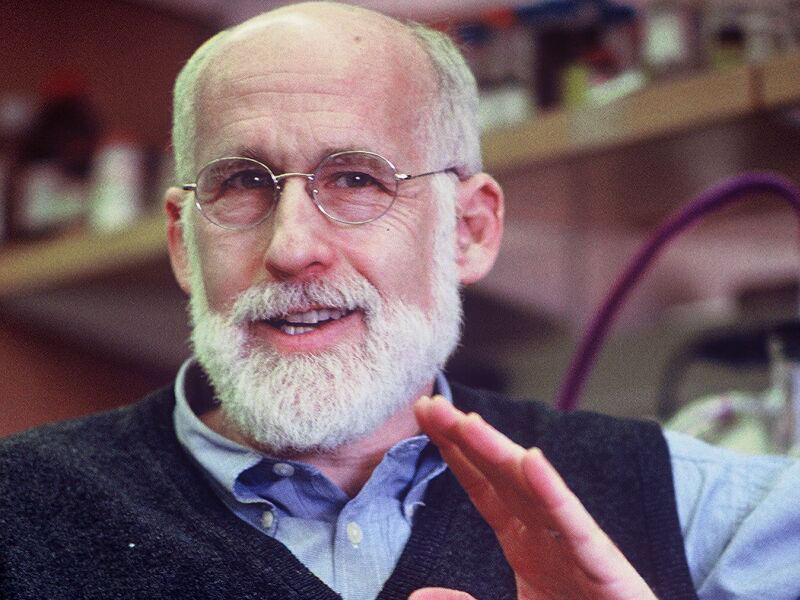
Jerome Groopman in 2016
Photograph courtesy of Jerome Groopman
THE STUDY OF Paul Tillich, the German philosopher and theologian, was a mandatory part of my education—and also one that I was certain would never prove useful in any context beyond the classroom. Exactly how my interview with Jerome Groopman, the physician and author, veered toward Tillich I can’t recall—it was 20 years ago now. But there I was, talking about writing and Tillich—and this saying from the Talmud: “And the good doctors will burn in hell.” In this profile, “The Examined Life,” Groopman talks about the life-and-death decisions that physicians must sometimes make, often with imperfect knowledge—and the challenges of writing about those consequential choices.
~Jonathan Shaw, Managing Editor
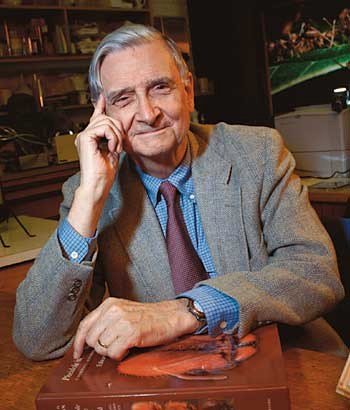
E.O. Wilson
Despite his gentle manner, I approached my interview with E.O. Wilson apprehensively. Not only was he an internationally acclaimed scientist, he was a superb writer—and I worried especially about that. When I visited him in the MCZ Lab building, Wilson had sandwich lunches available. After we finished, the resident ant colonies got the apple parings: when Ed ate, they ate. He had just finished Pheidole in the New World, an enormous monograph on which he worked for 16 years—drawing all 5,000-plus illustrations himself, despite the loss of vision he had suffered as a child—and he has kept publishing a torrent of accessible books inviting readers to contemplate the natural world, and how much of it we are losing. After our wonderful conversation, it took me months to finish this relatively brief profile, “Of Ants and Earth,” as I worried over the text, wanting to write something good enough to reflect, and honor, my subject. But even before I began, I knew where the article would end, with Ed expressing, as only he could, a mixture of science and wonder in contemplation of nature. Talking about the mind-boggling diversity of microscopic species, virtually all still unknown to science, he said: “There is no end to science!” And then, on the journey of scientific exploration, “You could spend a lifetime in a Magellenic voyage around a single tree stump” without ever coming to the end of discovery.

Andy Borowitz
Photograph by Robert Adam Mayer
Craig Lambert had a special way of getting public figures to agree to in-depth profiles for the first time—happily for us, often in the pages of their alumni magazine. He profiled “smart funny” humorist Andy Borowitz, “seriously funny” writer Ian Frazier, book agent Andrew Wylie, novelist and essayist Mark Helprin, and many others. One breakthrough was his profile of Frank Rich, the powerful, long-time theater critic for The New York Times, who subsequently became a biting political columnist, a TV producer, and more. In “Reviewing ‘Reality,” Lambert began with President George W. Bush’s MISSION ACCOMPLISHED moment during the Iraq War—and Rich’s take as he “scrutinizes pseudo-events like the aircraft-carrier scenario in a quest to distinguish the smoke of real fires from the ubiquitous fumes of smoke-making machines.” Ever the critic, Rich deconstructed the theatrics as “Bush emerged from the cockpit ‘draped in more combat gear than a Tom Cruise stunt double,’” and the whole event was choreographed so “The president’s address began ‘precisely at dusk in the West—Hollywood’s so-called magic hour, much prized by cinematographers for the golden glow it bestows on any scene.’” Nearly two decades later, the realities of the war and its aftermath loom much larger than the stage craft, and Rich’s critique, explicated by Lambert, is spot-on as a guide to our politics. Happily, Lambert, in retirement, continues to write for these pages, as in his recent look at Times move critic A.O. Scott in “The Way of the Critic” (an amazing guide to Hollywood and movies—perhaps preserved in amber, now that the coronavirus has overturned the industry’s business model), and in coming attractions: stay tuned.
~John Rosenberg, Editor
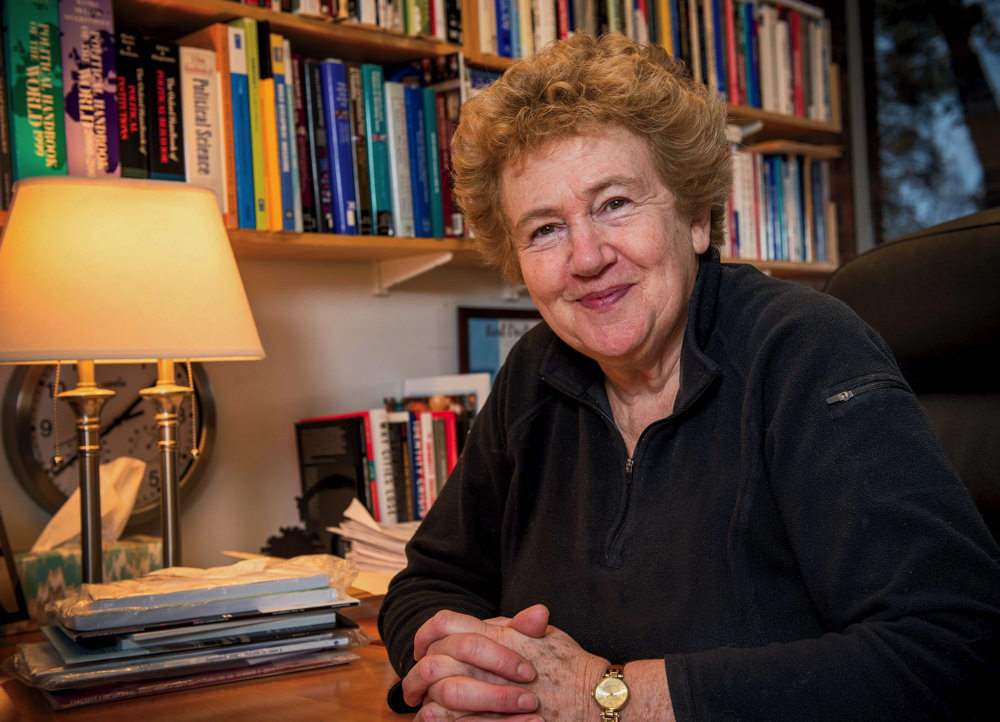
Pippa Norris
Photograph by Stu Rosner
ONE OF THE FIRST features I read when I came to Harvard Magazine was associate editor Lydia Gibson’s profile of political scientist Pippa Norris. This quote made a lightbulb go off in my head: “For two decades, she wrote, populist authoritarian leaders—appealing to nationalism and tradition, preaching hostility toward outsiders and elites—had attracted swelling support across Europe and the Americas, winning legislative seats and ministerial offices, gaining government power. Trump was a part of the wave.” I had been bewildered about how our government, and several governments around the world, have reached their present states. Norris’s explanation, summarized so eloquently by Lydia, finally gave me a perspective that was both logical and nuanced.
~Kristina DeMichele, Digital Content Strategist
THE SPORTSWRITING landscape has changed considerably. Reporters covering the NBA, for example, compete to see who can tweet each trade or free-agent signing first, often posting the same information seconds apart. For this reason, I’ve always found the more nuanced sportswriting of Louisa Thomas, a staff writer at The New Yorker, refreshing. Amid the breaking-news frenzy, she always manages to offer a unique perspective. “Maybe if I can help people see something a little bit differently, then that’s my job,” she told me. I enjoyed profiling her in our latest issue.
-Jacob Sweet, Associate Editor
More from “At Home with Harvard”
- Spring Blooms: Your guide to accessing the Arnold Arboretum as the seasons turn in Boston
- Harvard in the Movies: Our favorite stories about Harvardians on screen
- The Literary Life: Our best stories about the practice and study of literature
- Night at the Museum: Our coverage of Harvard’s rich museums and collections
- Nature Walks: Walking, running, and biking in Greater Boston’s green spaces, even while social distancing
- Supporting Local Businesses: Our extensive coverage of local restaurants and retailers, and how you can support them during this time of crisis
- Medical Breakthroughs: Our best stories going deep into the ideas and personalities that will shape the medical care of tomorrow
- Rewriting History: From race and colonization to genetics and paleohistory, our favorite stories about the people reshaping the study of history
- The Climate Crisis: Highlights from our wide-ranging coverage of the environment
- Crimson Sports Illustrated: With 2020 winter sports ending early and the spring collegiate season wiped out almost entirely, we look back at Crimson highlights from past years.
- The Real History of Women at Harvard: Stories covering the admission of women, the Harvard-Radcliffe merger, the rise of women in the faculty ranks, Harvard’s first woman president, and more
- The Undergraduate: Our favorite student essays on the undergraduate experience
- The Secret Lives of Animals: From zoology and evolutionary science to animal-rights law to the joys of local wildlife, a selection of our favorite animal stories
- Harvard on the Small Screen: Our coverage of the creators, writers, and actors in your favorite TV shows
- Extraordinary Lives: From our “Vita” section, extraordinary profiles of authors, artists, activists, and more
- Great Legal Minds: Our favorite stories on the minds reshaping American law
- Harvard History through a New Lens: Some of our most notable stories about obscure, dark, or surprising episodes in Harvard’s history
- Health and Fitness: Our extensive coverage of Harvard’s breakthough health and wellness research
- Pride Month: Stories of Harvard's LGBTQ life, research and history
- Inequality in America: Stories of America’s extreme inequality
- The Immigrant Experience: A selection of our writing on immigration, displacement, and the global refugee crisis
- Harvard in the World: Harvard Magazine’s coverage of the University’s expanding global reach
- Theater & Broadway: Harvardians take to the stage.
- American Democracy: Our coverage of the nation's ailing democracy
- Traveling for the Story: Stories from all over the world
- Library Treasures: Our coverage of Harvard’s libraries, more relevant than ever in an online world
- Women in Sports: Celebrating women athletes raising the bar in their sports
- Back to School: Our coverage of the freshman experience at Harvard
- Remarkable Alumni: Some Harvard matriculants really took the road less traveled.
- Sounds of Music: A selection of our stories on musicians, composers, conductors, music scholars, and more
- Election Day: Our stories on the forces that shaped the presidential election in a year like no other
- Health Care in America: Our top stories on the crises in American health care
